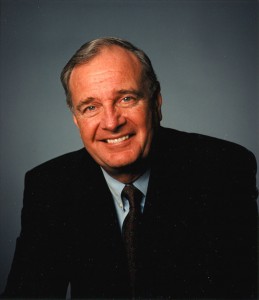 TORONTO, Feb. 6, 2013 /CNW/ – C21 Canada – Canadians for 21st Century Learning & Innovation, a not-for-profit organization comprised of education organizations and knowledge sector companies, will host its second annual Summit on 21st century learning, Tuesday, February 12 to Wednesday, February 13 at the Kingbridge Centre in King City.
TORONTO, Feb. 6, 2013 /CNW/ – C21 Canada – Canadians for 21st Century Learning & Innovation, a not-for-profit organization comprised of education organizations and knowledge sector companies, will host its second annual Summit on 21st century learning, Tuesday, February 12 to Wednesday, February 13 at the Kingbridge Centre in King City.
The Summit, entitled Convening Engaged Minds: Leader to Leader, will feature a Fireside Chat with former Prime Minister Paul Martin on the evening of February 12th. The event will bring together 100 of Canada’s education and business leaders to gather perspectives on Canada’s skill requirements in the knowledge and digital age and on what the related education policy and investment priorities should be for the country.
“Today’s innovation-driven economy and society demands people with 21st century inspired competencies and skills. A key challenge for Canada is to modernize our learning systems and ensure that all Canadians, without exception, are positioned for success on an equitable basis,” states Mr. Martin.
The product of C21 Canada’s inaugural Summit last year was the organization’s Shifting Minds document, a national vision and framework for 21st century models of learning in Canada. The goal of C21 Canada is to support the accelerated and effective integration of 21st century skills and competencies, teaching practices and learning technologies into Canada’s education systems.
“The ‘Arab Spring’ is coming to more than the Middle East. It is coming to education, healthcare, government and every place where the radical democratization of knowledge and power and the culture that comes along with it reaches the public. And that is about everywhere. It is not only necessary to adapt curricula for 21st century needs. It’s necessary to adapt learning technologies and methodologies as well,” states John Abele, co-founder and director of Boston Scientific. Mr. Abele, a well respected and successful innovator, will share the Fireside Chat with Mr. Martin.
C21 Canada is also launching its inaugural National 21st Century Leadership and Innovation Awards. Five people from across Canada will be recognized and honoured for their excellence in 21st Century Leadership and Innovation.
Go to www.c21canada.org for a complete Summit agenda.
About C21 Canada
C21 Canada is a unique blend of national education associations and knowledge sector businesses united in their belief that 21st century models of learning must be adopted in public education on an urgent basis to position Canadians for economic, social and personal success in the high skills, knowledge and innovation based economy.www.c21canada.org
C21 Canada’s Founding Members: Canadian Education Association, Canadian School Board Association, Dell, EF Educational Tours, IBM, McGraw-Hill Ryerson, Microsoft, Nelson Education, Oxford University Press, Pearson, Scholastic Education, SMART Technologies.
Secretariat: 21st Century Learning Associates, MindShare Learning
Summit Twitter hashtag: #C21Summit13
For media inquiries, please contact:
Robert Martellacci
C21 Canada, Vice-president
robert.martellacci@c21canada.org
416.569.2106



